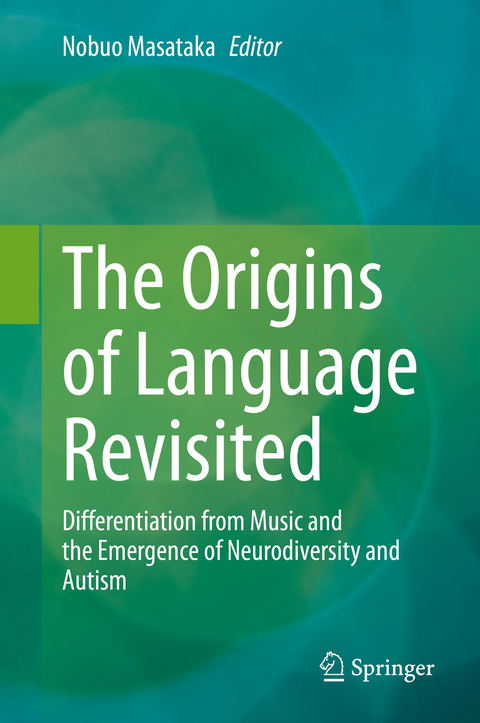
The Origins of Language Revisited
Springer Verlag, Singapore
978-981-15-4249-7 (ISBN)
Drawing on the empirical evidence in each respective chapter, the editor presents a coherent account of how language evolved, how music differentiated from language, and how humans finally became neurodivergent as a species.
Chapters on nonhuman primate communication reveal that the evolution of language required the neural rewiring of circuits that controlled vocalization. Language contributed not only to the differentiation of our conceptual ability but also to the differentiation of psychic functions of concepts, emotion, and behavior. It is noteworthy that a rudimentary form of syntax (regularity of call sequences) has emerged in nonhuman primates.
The following chapters explain how music differentiated from language, whereas the pre-linguistic system, or the “prosodic protolanguage,” in nonhuman primates provided a precursor for both language and music. Readers will gain a new understanding of music as a rudimentary form of language that has been discarded in the course of evolution and its role in restoring the primordial synthesis in the human psyche. The discussion leads to an inspiring insight into autism and neurodiversity in humans.
This thought-provoking and carefully presented book will appeal to a wide range of readers in linguistics, psychology, phonology, biology, anthropology and music.
Nobuo Masataka has been a Professor at Kyoto University’s Primate Research Institute since 2003. His doctoral dissertation was a study on vocal communication in New World primates. Particularly, he specialized in playback experiments, using synthesized sounds in order to investigate vocal perception in monkeys. Thereafter, he extended his research interests to include human infants and arrived at several intriguing findings on preverbal infants’ vocal interactions with their mothers. These findings are summarized in his book Onset of Language, published by Cambridge University Press in 2003. In 2008, he edited The Origins of Language, Unravelling Evolutionary Forces, published by Springer. The present work is essentially the second edition of that book.
Chapter 1. Evidence for the gestural origins of language that is not incompatible with the vocal theory of language origins.- Chapter 2. Primate Voice Physiology: Similarities and Difference between Humans and Non-Human Primates.- Chapter 3. Integrations of multiple abilities underlying the evolution of primate vocalizations.- Chapter 4. Conversational rules among primate species.- Chapter 5. Language evolution from a perspective of Broca’s area.- Chapter 6. Social scaffolding of the development of vocal communication and language during infancy.- Chapter 7. Emergence of the distinction between "verbal" and "musical" skills in early childhood development.- Chapter 8. Yakut tradition of "Talking Jew's Harp" and its relation to vowel harmony as a paradigm of formative influence of music on language.- Chapter 9. Were musicians and artists in the Ice Age caves likely with autism spectrum disorder? - A neurodiversity hypothesis to explain the co-emergence of art and music as a type of prosodic protolanguage.
| Erscheinungsdatum | 29.06.2020 |
|---|---|
| Zusatzinfo | 19 Illustrations, color; 10 Illustrations, black and white; IX, 345 p. 29 illus., 19 illus. in color. |
| Verlagsort | Singapore |
| Sprache | englisch |
| Maße | 155 x 235 mm |
| Themenwelt | Geisteswissenschaften ► Psychologie ► Entwicklungspsychologie |
| Geisteswissenschaften ► Sprach- / Literaturwissenschaft ► Sprachwissenschaft | |
| Medizin / Pharmazie ► Studium | |
| Naturwissenschaften ► Biologie ► Humanbiologie | |
| Naturwissenschaften ► Biologie ► Zoologie | |
| Schlagworte | Communication • Evolution • language • Primates • vocalization |
| ISBN-10 | 981-15-4249-X / 981154249X |
| ISBN-13 | 978-981-15-4249-7 / 9789811542497 |
| Zustand | Neuware |
| Haben Sie eine Frage zum Produkt? |
aus dem Bereich


